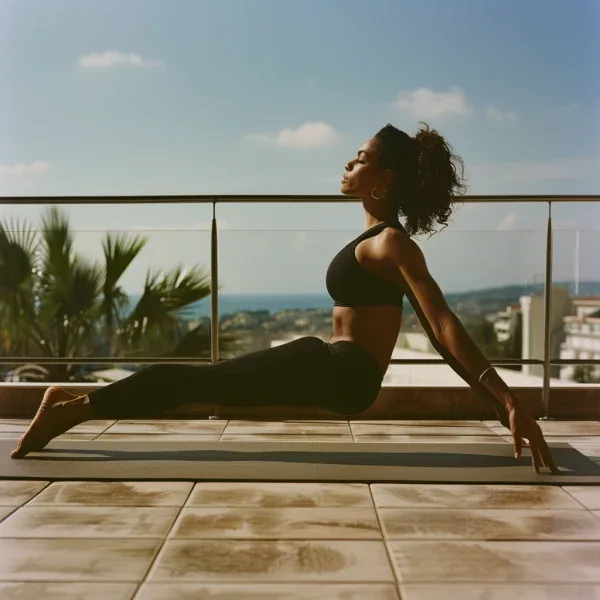by Eliza Sterling

Enter the beneficial world of training your body with minimalistic yet powerful exercises. In this journey, our spotlight falls on the all-encompassing plank and its impact on your wellness. Renowned fitness coach Lucy Novak guides us through the correct way to engage this powerhouse exercise.
Honing Your Plank Skill: A Plethora of Advantages
Humbly integrating the techniques of a well-performed plank can transform your fitness journey incredibly. It revamps your core strength, aiding in daily routine tasks and it alleviates back issues by optimizing back strength. Regularly practiced and perfectly executed planks enhance overall posture and body balance, owing to an empowered core. They are not just physical boosters, but also mood enrichers, especially when you notice your capacity to hold the plank extending without breaking a sweat!
Time to Talk About Muscles: Getting to Know Planks
Planks are your one-stop solution for working out all core muscles. They engage the prominent ‘six-pack’ muscles or rectus abdominis, deep-set core muscles (transverse abdominis), internal and external obliques along with muscles running along your spine. Alongside these, planking actively strengthens shoulder and arm muscles.
Why Planks Win the Fitness Prize
Planking, in a single move, works to enhance your entire core as well as your glutes, shoulders, and thighs. This exercise is tried, tested, and a proven classic for a reason!
Your Ultimate Guide to Planking
Let’s dive deeper into the optimal way to engage in planking:
- Ensure your forearms are parallel to the floor, aligning your shoulders right over the elbows.
- Extend your legs straight behind, pulling your belly button towards your spine, and lift your torso and legs off the ground.
- Aim to possess a straight alignment from your head to your toes.
The Perfect Plank: Key Tips
Breathe. Often a neglected part of intense positions such as planks, maintaining steady breaths can prevent a spike in blood pressure.
Keep your hips aligned with your back to avoid common mistakes – usually caused by fatigue – of having your hips too high or low.
Resist the urge to drop your head back. Maintain a straight look to avoid unnecessary pressure on your neck and back.
If a full plank seems overwhelming, begin by dropping to your knees. In time, as your strength enhances, upgrade to a full plank.
What’s Your Plank Time?
For plank beginners, holding the posture for an initial 15-second span, working up to a full 60 seconds is advisable. Repeating this process for three to five times, at least thrice a week, will help chart significant progress. Since planks can be performed practically anywhere – even while watching your favorite shows! – maintaining this routine should be a cakewalk.
Remember, the goal is to maintain a period of strong form, rather than losing technique over an extended plank.
Step Up Your Plank Game!
Planking is far from monotonous, and there are always variations to explore and keep you intrigued! If you aspire for a more formidable strength workout, consider switching your static plank into a dynamic one, alternating between variations.
Initially, maintaining a forearm plank might be effortless. But, as you gain overall strength, experiment with switch-ups such as transitioning to a high plank, holding, dropping back to a forearm plank, and repeating.
Elevate your balance further with a side plank or engage your triceps with a reverse plank that positions the front of your body to the sky. The planking universe is yours to explore!
isometric exercises, plank benefits, plank variations, improve core strength, fitness journey, classic body workouts, no equipment workouts, bodyweight exercises, improve posture, balance, abdominal exercises, strength workout, muscle building
Leave a Reply